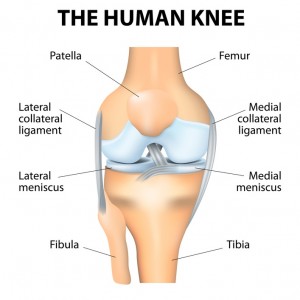Patellofemoral Pain Syndrome is a term that describes pain experienced in the front of the knee known as the patella or kneecap, and in the femur (thigh bone). This aching pain can develop into a sharp stabbing or a burning sensation with increased activity. Patellofemoral Pain Syndrome is particularly common among athletes, teenagers and people doing physical labor.
Most of the time, Patellofemoral Pain Syndrome originates from the softening of cartilage in the knee caused by overuse, injury, excess weight and the improper alignment of the kneecap. This syndrome may also be referred to as retropatellar pain, anterior knee pain, and chondromalacia patellae.
Most patients describe their pain with activities that involve the bending of the knee. Sudden stabbing pain comes with stair climbing and activities where squatting or kneeling is present. The burning sensation frequently follows prolonged sitting that is accompanied with office work or riding for an extended period on an airplane. A pseudo effect of Patellofemoral Pain Syndrome is felt when patients feel like their knee is going to give out. This is most likely to happen when moving down stairs. Oftentimes, these symptoms are associated with the start of a new activity or increasing the intensity level of recurring activities.
Is it Patellofemoral Pain Syndrome?
Patellofemoral Pain Syndrome is generally diagnosed with a physical exam. This typically includes a patient history to determine the cause of this pain. In some cases, x-rays or MRI imaging tests may be used to view the tissues inside the knee. These tests will help rule out structural damage with the connected tissues inside the knee.
The treatment for this syndrome is very direct and typically takes two approaches. First, avoiding the activities that are aggravating the symptoms associated with Patellofemoral Pain Syndrome is generally recommended. This includes changing physical activities to prevent sitting, squatting, or kneeling for a prolonged period of time. Sometimes non-prescription anti-inflammatory drugs may be helpful. These help decrease stiffness, swelling, and pain. Secondly, using ice and resting the affected area are frequently advisable.
Oftentimes, physical therapy exercises can help alleviate symptoms from Patellofemoral Pain Syndrome as well. These exercises focus on stretching and increasing flexibility in the knee. Performing exercises to strengthen the quadriceps may also help relieve the pain in the kneecap. For extreme cases, taping or bracing the affected area might be necessary, and for rare cases surgery becomes an option.
Patellofemoral Pain Syndrome is something that can typically be treated with conservative measures, which include changing physical behavior and taking non-steroidal anti-inflammatory drugs (NAISDs). Estimates suggest that between 80 and 90 percent of people who follow non-surgical treatments successfully recover from Patellofemoral Pain Syndrome and are able to resume former activities.

Recent Comments